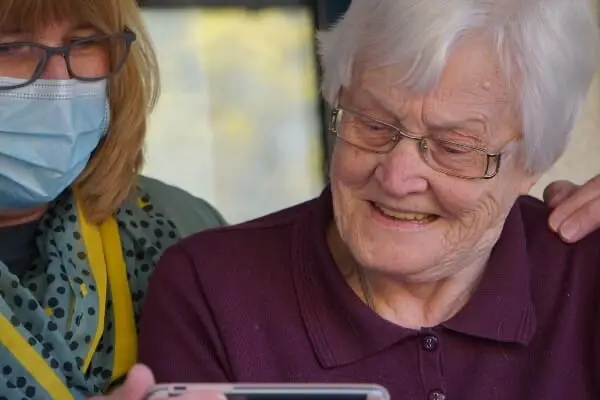The Importance of Safeguarding – Everything You Need to Know to Keep People Safe
Pexels Licence – Pixabay
Everyone has the basic human right to live a safe life, sheltered from abuse, neglect and harm. If you work with or care for vulnerable people, you are legally responsible for upholding this right and ensuring they are appropriately supported.
Implementing safeguarding protocols is the best way to offer this care and protect those individuals from people and situations that could cause them harm. This guide explains the importance of safeguarding and common issues to look out for when supporting children and vulnerable adults.
What is Safeguarding in Health and Social Care?
In health and social care, safeguarding is an all-encompassing term referring to any process, act or policy designed to protect and preserve the health, well-being and rights of vulnerable adults or children. It ensures that children have the care and support they need to grow and learn and protects the health and stability of vulnerable people’s lives.
What is the Importance of Safeguarding?
Safeguarding is crucial as it prevents harm, abuse and neglect from affecting those who cannot protect themselves. By creating comprehensive support networks, you can assist vulnerable people with health care and financial aid whilst upholding their standard of living and embracing their dignity.
Organisations, particularly schools, charities, hospitals and care homes, must have safeguarding policies to teach their staff how to identify and reduce the risk of harm, keeping vulnerable people safe. Without these procedures, you risk increasing the frequency of abuse, not identifying incidents, caring without empathy, and fueling stress and a loss of agency for sufferers.
The Importance of Safeguarding Children
Children and young people are increasingly open to abuse and neglect. They may not be able to recognise negative behaviours and dangerous situations as they do not understand their severity and consequences. Plus, with the pressures of social media, they can be exposed to increasing amounts of harmful content and situations.
Safeguarding also lays the foundations to reduce future abuse, as it teaches children to identify and mitigate dangerous behaviour. By highlighting negative behaviours and showing children how to counter them, we can help them protect themselves when they become adults. Our courses cover a wide range of safeguarding topics to ensure a holistic approach to safety. From keeping children safe in schools and colleges and online safety to promoting positive mental health and preventing radicalisation, our courses equip participants with the knowledge and skills necessary to create a secure environment.
What is Contextual Safeguarding?
There are many ways to approach safeguarding, with differing focuses. Contextual Safeguarding accounts for and responds to risks for children and young people outside their families.
Often, parents and guardians have little knowledge of or control over their children’s relationships and experiences outside of the home, meaning they can easily be open to harm and abuse. Therefore, accounting for external influences creates more comprehensive systems of care. By understanding the different environments, you can combat the risks that they pose.
For example, in schools, staff have increased insight into how children behave and interact with others, meaning they can spot the signs of harm earlier and identify cases parents may miss.
Who is Responsible for Safeguarding Children?
Anyone working with children has a safeguarding responsibility towards them. They must recognise and prevent abuse and neglect to keep them safe, no matter the environment. The Children Act 2004 states that local authorities must promote cooperation between themselves, their partners and any appropriate persons and parties involved in the child’s care.
If a case is identified and reported, it is up to the local authorities and social care services to investigate the situation and ensure that the child is protected.
Safeguarding Vulnerable Adults
As with children and young people, vulnerable adults cannot care for themselves, potentially due to a mental, physical or functional condition that leaves them open to exploitation or harm. There are other reasons why an adult may be vulnerable such as poverty and disadvantage, past trauma, or isolation and rejection from communities and family.
Anyone can suffer from abuse and neglect for any reason. Everyone should be able to live safely away from abuse and neglect and have the agency to make decisions about their well-being, having all their wishes and interests understood and accounted for when administering care.
Common Forms of Abuse and Neglect
Unfortunately, abuse and neglect occur in many forms; understanding them is key to identifying and combating them effectively. Here are some to look out for:
- Sick people that cannot take care of themselves are open to neglect that will negatively impact their health
- Those with mental impairments can be abused and manipulated into doing things against their interests as their disability inhibits their ability to refuse
- Elderly people with memory issues can leave them vulnerable to manipulation
When it comes to safeguarding children, they can lack the awareness of social norms or the severity of particular actions, so they can often accept dangerous behaviours as normal. These behaviours involve:
- Child Criminal Exploitation
- Child Sexual Exploitation
- Domestic Abuse
- Radicalisation
- County lines
- Upskirting
- Honour-based Abuse
Looking for these types of abuse and teaching children to do the same is crucial for protecting them.
What is a Safeguarding Policy?
Administering safeguarding is a complex task, so organisations have a legal obligation to introduce a written safeguarding policy statement that regulates how they protect vulnerable people on their premises. It should clearly state the company’s commitment to safeguarding and explain the measures required to uphold that commitment.
Child Safeguarding Policy
Under Section 11 of the Children Act 2004, every organisation must have a Child Safeguarding Policy and conduct DBS checks on their employees. The policy should define:
- Its aims and purpose
- The process to follow if employees are concerned about a child’s well-being
- The procedures to safeguard children from abuse and neglect
- Those covered by the policy and those that must adhere to its regulations and processes
- Any additional needs and support for ethnic minorities or those with disabilities
- The relevant legislation and guidance informing the policy to your staff
The Six Safeguarding Principles
Introduced in the Care Act 2014, the six Safeguarding Principles are the NHS standards of safeguarding. By following these ideas, you can administer effective safeguarding to protect those in your care.
- Empowerment – educating vulnerable people about their situation and options and allowing them to make decisions.
- Prevention – the best way to protect people from abuse and neglect is to take steps to prevent it from occurring.
- Proportionality – every care measure should be appropriate for the vulnerable person’s needs and never go beyond them.
- Protection – those subjected to abuse and harm need adequate support and representation.
- Partnership – forming partnerships with local authorities and communities help you provide extensive care.
- Accountability – everyone has different duties regarding safeguarding, and anyone in their life should be aware of the risks. Then, each person’s actions should be recorded to create a clear image of the care.
Learn How to Safeguard Today
After understanding the importance of safeguarding, learning how to implement it is vital. With a Caredemy Safeguarding course, you can obtain a CPD Accredited certificate and the necessary knowledge to care for others.
Our non-clinical courses can support anyone. You do not even have to work in health and social care; we have safeguarding courses suitable for many professions, including sports coaches and taxi drivers.
Whether you are an individual looking to progress your career or an employer that wants to increase your staff’s skill set, we have ideal courses to support you. They cover a broad range of health and social care topics, and many are available for free, offering you affordable training and education.
Browse our course selection today to discover what is available, or contact our friendly team to ask any questions. We are always happy to help you improve your skill set.
FAQ
What makes the 6 safeguarding principles important?
The safeguarding principles are crucial for protecting vulnerable people effectively without infringing on their rights. They ensure that every precaution you put in place prevents abuse and harm and embraces the individuality and agency of those in your care.
What is the most crucial element of safeguarding?
Preventing harm, abuse, and neglect is the fundamental priority of safeguarding.
Why should I value dignity in safeguarding?
When safeguarding, your care can limit the rights and dignity of those in your care. Every measure you introduce should encourage independence and involve the person in your care as much as possible.
Why is safeguarding the elderly important?
The elderly are often subject to illness and impairments that prevent them from looking after themselves or make them vulnerable to abuse and neglect. Safeguarding these people preserves their standard of living.
{ “@context”: “https://schema.org”, “@type”: “Article”, “mainEntityOfPage”: { “@type”: “WebPage”, “@id”: “https://caredemy.co.uk/importance-of-safeguarding/” }, “headline”: “The Importance of Safeguarding – Everything You Need to Know to Keep People Safe”, “description”: “Implementing safeguarding protocols is the best way to offer this care and protect those individuals from people and situations that could cause them harm. This guide explains the importance of safeguarding and common issues to look out for when supporting children and vulnerable adults.”, “image”: “https://caredemy.co.uk/wp-content/uploads/2023/02/Holding-hands-Pexels-Licence-Pixabay.webp”, “author”: { “@type”: “Organization”, “name”: “Caredemy”, “url”: “https://caredemy.co.uk/” }, “publisher”: { “@type”: “Organization”, “name”: “Caredemy”, “logo”: { “@type”: “ImageObject”, “url”: “https://caredemy.co.uk/wp-content/uploads/2022/11/cropped-cropped-cropped-cropped-cropped-Caredemy_multiple_logosb-e1611314968243-1-4.png” } }, “datePublished”: “2023-02-13”, “dateModified”: “2023-02-13” } { “@context”: “https://schema.org”, “@type”: “FAQPage”, “mainEntity”: [{ “@type”: “Question”, “name”: “What makes the 6 safeguarding principles important?”, “acceptedAnswer”: { “@type”: “Answer”, “text”: “The safeguarding principles are crucial for protecting vulnerable people effectively without infringing on their rights. They ensure that every precaution you put in place prevents abuse and harm and embraces the individuality and agency of those in your care.” } },{ “@type”: “Question”, “name”: “What is the most crucial element of safeguarding?”, “acceptedAnswer”: { “@type”: “Answer”, “text”: “Preventing harm, abuse, and neglect is the fundamental priority of safeguarding.” } },{ “@type”: “Question”, “name”: “Why should I value dignity in safeguarding?”, “acceptedAnswer”: { “@type”: “Answer”, “text”: “When safeguarding, your care can limit the rights and dignity of those in your care. Every measure you introduce should encourage independence and involve the person in your care as much as possible.” } },{ “@type”: “Question”, “name”: “Why is safeguarding the elderly important?”, “acceptedAnswer”: { “@type”: “Answer”, “text”: “The elderly are often subject to illness and impairments that prevent them from looking after themselves or make them vulnerable to abuse and neglect. Safeguarding these people preserves their standard of living.” } }] }





